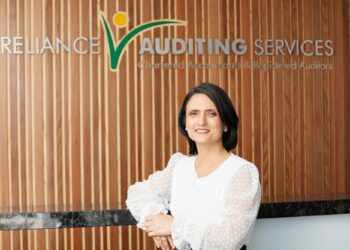Tim Miller, head of technical and education for Smarter SMSF, said in the latest technical update that the regulations regarding in-house assets are “quite clear” in that they require the trustee to plan to reduce the level of in-house assets below 5 per cent by way of disposal by the end of the following year.
“It actually stipulates that you’ve got to sell down those in-house assets. This is often an issue raised by trustees because if they’re not completing their fund audit until around May or at the end of the year, they’ve got a month to act realistically,” Miller said.
“What the regulator is looking at is for a plan to be prepared because the non-preparation of the plan is the breach of the legislation, as opposed to the sell down of the investment.”
He added that if the trustee can demonstrate they have an action to sell down that asset, then the ATO will be more likely to work with the fund’s trustees to ensure that they follow through on that plan.
Aaron Dunn, CEO of Smarter SMSF, added that in-house asset acquisitions are a broad area that can confuse trustees, but three “limbs” should be considered.
Miller added that those “limbs” comprise two acquisition-based and a third dealing with the 30 June limit.
“We’re looking at acquiring in-house assets that meet the definition. That is, there is a restriction that the acquisition cannot exceed 5 per cent of the value of the fund assets – that’s limb number one,” Miller said.
“That’s the obvious one for anyone looking at acquiring an in-house asset for the first time. If we’re looking to acquire additional in-house assets, the second limb is that the acquisition of those additional in-house assets will clearly have to be less than 5 per cent. The total in-house assets at acquisition can’t exceed that. You have to look at the previous acquisition and the current one and make sure when you acquire the new asset, it doesn’t put your total in-house assets over 5 per cent.”
He continued that the final limb is the ongoing in-house asset test, which is an annual requirement to ensure that at 30 June every year, the total value of in-house assets is below the 5 per cent threshold.
“That means ensuring that you have not exceeded that 5 per cent for the total of your in-house assets versus the remainder of the fund assets,” he said.
Dunn said section 82 of the Superannuation Industry (Supervision) Act sets out the parameters of what trustees must do if the fund’s in-house asset levels exceed the threshold at the end of the income year. It stipulates that there is a requirement to set out a written plan by the end of the following income year.
Miller added that one of the most commonly misunderstood elements of the regulations is the belief that trustees can do something else to make sure that the fund remains below the 5 per cent threshold by “topping” it up in some other way.
“Can we bring other investments in? Can we make contributions? The short answer is no,” he said.
“The alternative is to not wait until 30 June to review your in-house asset valuation but to review those valuations immediately before 30 June to see whether or not there is a likelihood of it encroaching on that five per cent and then potentially look at the capacity to make contributions before 30 June to ensure that the in-house asset level is at or below that limit.”
This is where the timing of market valuations is important, he said.
“We know the ATO has been very clear on the fact that we need to value to market each year, but when is the timing of that valuation being done? And again, in that lead up to 30 June, part of understanding how that 5 per cent of the fund assets threshold will work is naturally going to play a crucial role in determining whether you may have a breach there.”


